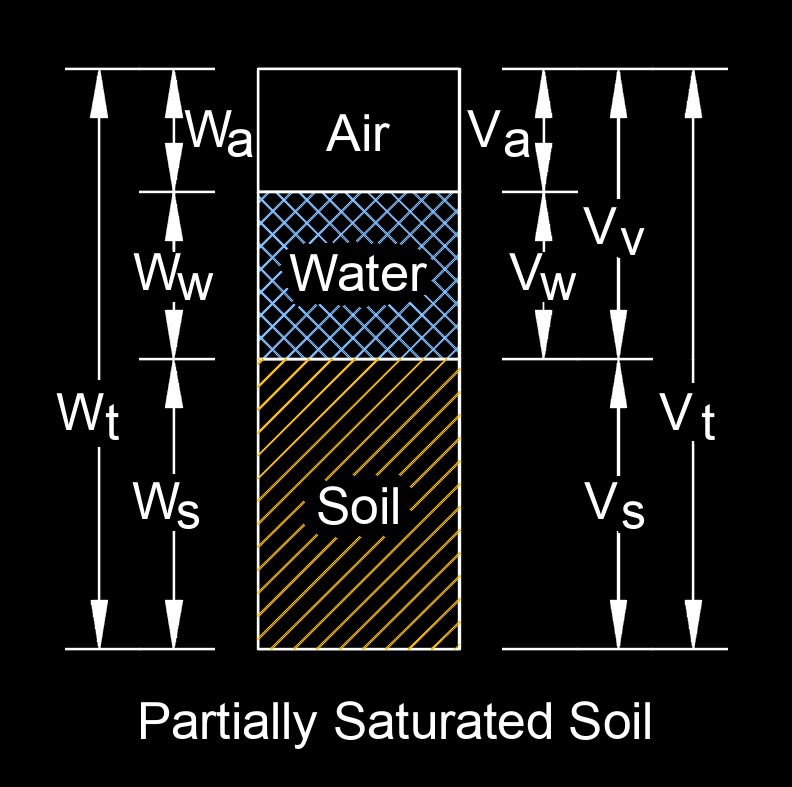Volume of Solid Soil
Volume of Solid Soil Formula |
||
|
\( V_s \;=\; \dfrac{ W_s }{ G_s \cdot Y_w }\) (Volume of Solid Soil) \( W_s \;=\; V_s \cdot G_s \cdot Y_w \) \( G_s \;=\; \dfrac{ W_s }{ V_s \cdot Y_w }\) \( Y_w \;=\; \dfrac{ W_s }{ V_s \cdot G_s }\) |
||
| Symbol | English | Metric |
| \( V_s \) = Volume of Solid Soil | \(ft^3\) | \(m^3\) |
| \( W_s \) = Weight of Soil | \(lbf\) | \(N\) |
| \( G_s \) = Specific Gravity of Soil | \(dimensionless\) | \(dimensionless\) |
| \( Y_w \) = Unit Weight of Water | \(lbf\) | \(N\) |

Volume of solid soil, abbreviated as \(V_s\), is the amount of space occupied by the soil particles themselves, excluding any voids or air spaces within the soil. It is an important parameter in various fields, including civil engineering, geology, and agriculture, as it can affect the load-bearing capacity of the soil, its compaction, and its ability to retain water and support plant growth.
Keep in mind that the void ratio can vary depending on the type of soil, its compaction, and other factors. Different types of soil (sand, clay, silt) have different inherent void ratios.
Calculating the volume of solid soil is crucial in geotechnical engineering for designing foundations, retaining walls, and other structures. It helps engineers determine the soil's load bearing capacity and its behavior under different conditions. In agriculture, knowing the volume of solid soil can help in optimizing irrigation and nutrient management for plant growth.

